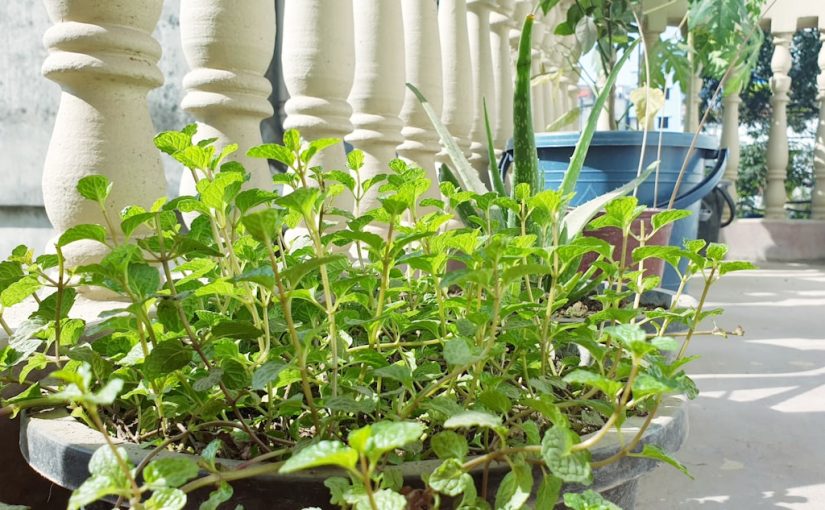Are your houseplants looking a bit lackluster, struggling with soggy soil or stunted growth? Many plant enthusiasts unknowingly battle common issues like root rot and poor aeration, which can quickly turn vibrant foliage into a sad sight. The secret weapon often overlooked in achieving thriving indoor greenery is a simple yet powerful amendment: perlite. This lightweight, volcanic glass is a game-changer for potting mixes, dramatically improving soil structure to ensure your beloved plants receive the oxygen and drainage they desperately need. If you’ve ever wondered how to unlock the full potential of your potted companions, understanding and utilizing perlite is a crucial step. Dive in to discover how incorporating perlite can transform your plant care routine, leading to healthier roots and happier, more vigorous houseplants.
Understanding perlite: nature’s airy touch
At its heart, perlite is a naturally occurring, amorphous volcanic glass that has a remarkably unique property: when heated rapidly to temperatures of 1,600 degrees Fahrenheit (871 degrees Celsius), it pops much like popcorn. This process causes the trapped water molecules within the perlite to vaporize and create countless microscopic air cells, expanding the material up to twenty times its original volume. The result is a lightweight, white, porous material that is inert, sterile, and pH neutral. Unlike sand or heavy garden soil, perlite doesn’t compact over time. Instead, its irregular surface and intricate internal structure provide an ideal environment for enhancing soil properties without adding significant weight or altering the chemical balance of your potting mix. This makes it an invaluable component for any houseplant enthusiast looking to optimize their growing medium.
The critical role of soil aeration and drainage
The primary function of perlite in potting mixes revolves around vastly improving soil aeration and drainage. Plant roots, much like our own lungs, require oxygen to perform vital functions, including water and nutrient uptake. When soil becomes compacted – a common issue with traditional potting soils over time or due to frequent watering – air pockets disappear, suffocating roots and hindering their ability to absorb what they need. This lack of oxygen is a leading cause of root rot, a fungal disease that can quickly devastate houseplants. Perlite’s irregular, porous structure creates permanent air channels within the soil, ensuring that oxygen can reach the root zone. Simultaneously, these same air pockets facilitate excellent drainage, preventing water from pooling around roots and further reducing the risk of root rot. By preventing waterlogging, perlite protects roots from fungal pathogens and ensures a healthy, oxygen-rich environment for optimal growth.
How to effectively incorporate perlite into your potting mixes
Adding perlite to your soil mix is a straightforward process that yields significant benefits. The ideal ratio depends heavily on the specific needs of your plants. For most common houseplants, a mix of 20-30% perlite to 70-80% potting mix is a good starting point. However, plants that demand extremely sharp drainage, such as succulents, cacti, or certain epiphytic plants, will thrive with a much higher perlite content, often ranging from 50% to even 70% of the total mix. When mixing, simply combine the dry potting soil and perlite thoroughly in a bucket or large container before adding water or planting. This ensures an even distribution throughout the medium. Always handle perlite in a well-ventilated area or wear a mask, as the fine dust can be an irritant. By customizing your perlite ratios, you can create bespoke soil conditions that cater precisely to each plant’s unique requirements, fostering stronger, more resilient growth.
| Plant Type | Recommended Perlite Ratio (Perlite:Potting Mix) | Key Benefit |
|---|---|---|
| Succulents & Cacti | 50-70% perlite | Extremely fast drainage, prevents root rot in arid-loving plants. |
| Aroids (Philodendron, Monstera) | 30-50% perlite | Excellent aeration and good drainage, mimicking their natural climbing habitats. |
| Foliage Plants (Pothos, Ficus) | 20-30% perlite | Improved drainage and aeration without excessive drying. |
| Moisture-loving Plants (Ferns, Calatheas) | 10-20% perlite | Enhances aeration while allowing soil to retain adequate moisture. |
Beyond aeration: additional benefits and common misconceptions
While aeration and drainage are perlite’s most celebrated attributes, it offers several other advantages that contribute to overall plant health. Its lightweight nature helps to reduce the overall weight of pots, making larger containers easier to move. Being sterile and inert, perlite introduces no diseases or pests into your soil and won’t react with fertilizers, maintaining the intended nutrient balance. A common misconception is that perlite *absorbs* water like a sponge; in reality, it retains a small amount of moisture on its surface and within its tiny crevices, but its primary function related to moisture is facilitating rapid drainage and creating air pockets. This means it helps prevent waterlogging more than it actively holds water for the plant. Its stable structure also prevents soil compaction over time, ensuring that the benefits of improved aeration and drainage are long-lasting. By understanding these nuances, you can appreciate perlite’s multifaceted role in creating a robust and supportive environment for your indoor garden.
In conclusion, incorporating perlite into your houseplant soil mixes is a remarkably effective and simple strategy to combat common issues and promote robust plant health. From its origins as volcanic glass to its expansion into a lightweight, porous soil amendment, perlite plays a crucial role in providing the essential aeration and drainage that roots crave. By preventing harmful compaction and waterlogging, it safeguards against root rot and ensures an optimal, oxygen-rich environment for nutrient uptake and vigorous growth. Whether you’re nurturing moisture-sensitive succulents or lush foliage plants, adjusting the perlite ratio allows for tailored soil conditions that cater to each plant’s specific needs. Embrace this humble yet powerful material, and you’ll undoubtedly observe a significant transformation in the vitality and resilience of your beloved houseplants, leading to a more rewarding and successful indoor gardening journey.
Image by: Touhidul Islam
